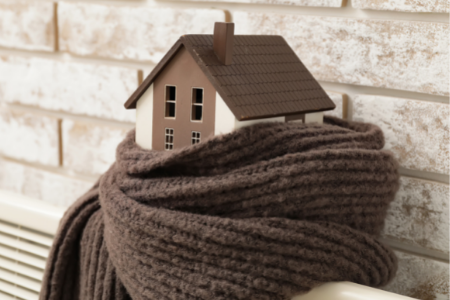
Dark and dreary winters can often lead to higher energy costs as families try to make their living environments more enjoyable. Common culprits include lights flipped on all day to accommodate fewer daylight hours and increased use of the heater, thanks to freezing temperatures. Energy expenses also build up with seemingly small gestures like humidifiers, running taps, and hot water heater usage as you try to find the perfect way to defrost when winter blues take hold. Luckily, there are plenty of ways to lower your energy costs, which means big winter savings.
Follow the Day’s Natural Rhythm
Though sunlight won’t quite warm you up in wintertime like it does in summer (or like your heater will), it helps. When waking up, be sure to open your drapes so that the sun can filter in naturally and warm the space, even if just in the slightest. When the sun goes down and the day grows colder, be sure to close your drapes to create an additional barrier to protect against the winter weather.
Weatherproof Your Home
Following the last tip, be sure to use weatherproof features where possible. This can be something as simple as buying special drapes or thicker curtains that are designed to shield your home from the elements. It can also mean sealing up trims around the exterior that are allowing additional cold air to flood the home. For example, if your door does not lie flush with the frame when closed, a tremendous amount of cold air can enter the space. Check out all windows and doors, especially in unused rooms where cold air could seep in without notice. Properly weatherizing your home can ensure that any efforts you use to warm up stay within the walls of your home while adverse weather stays out.
Consider Upgrading to a Smart Home
Smart home technology may seem counterintuitive when viewing cost-effectiveness at the surface level. However, the addition can make a major difference in the long run. Smart home technology can detect and adjust things like temperatures and lighting to optimize energy usage in your home. A major benefit of smart home tech is that it can auto-adjust when you are away and adjust again upon return. Depending on the manufacturer, you may also be able to control the system from your phone.
Layer Up
This one may seem like an obvious solution, but it’s surprising how many people do not choose to layer themselves as the first mode for warming up. Taking some time to throw on a sweater and a pair of socks may be just what you need to negate your thermostat on some days. You may even encourage family bonding by squishing together on the couch for movie night or swaying your pets to snuggle up. Extra body heat is a great way to find some comfort on the coldest of days.
Use Energy Efficient Appliances & Lights
While it may seem like the best option for lowering energy costs is to simply keep lights off, it’s not always possible. When in use, it’s important that you have the best energy-efficient tech. Consider overhauling your lighting and appliances for ones that rank highly according to ENERGY STAR. Energy-efficient bulbs and appliances will help to lower your energy bills, even if rarely in use. To take it a step further, opt for LED bulbs. Replacing your light bulbs with energy-efficient options can equate to $50 savings over the course of the light bulb’s life.
Choose a Localized Heat Option
When it comes to warming up, sometimes an energy-fueled source is necessary. Choosing to use smaller methods to warm up rather than using the thermostat for the entire home 24/7 can mean thousands of dollars in savings every winter season. Rather than warming up the entire house with the HVAC system, make a fire in the living room and huddle around it. Consider purchasing a heating blanket and space heater for bedrooms at night. These heating methods may not make the entire home toasty, but they’re affordable solutions that warm on a small scale. Take extra care to follow the directions for safe usage of small heating sources.
Work Your Way Up
This tip is perfect for tying up all your options for saving money during winter. If you’re looking to save money, it’s important that you work your way up in solutions rather than diving full-fledged into expensive ones. While it’s important that you’re comfortable during the winter months, affordability should not go out the window. Try to implement energy-saving tips on the smallest scales (meaning least expensive) and weigh it against the comfort level of your home.
Small Steps Have Big Rewards
Keeping warm during winter can be costly but, luckily, there are multiple ways to maximize efficiency and, in turn, lower costs. Whether it be small changes or drastic overhauls, every bit will help to make winter more affordable. Any of these tips can be modified and adjusted to fit your specific needs! Over time, you will learn what works best based on the size of the home, number of occupants, and your preferences.
For more tips on saving energy year-round, check out Energy.gov’s ultimate guide.
